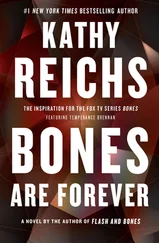Here’s the script. First, a crown bud appears deep in the jaw. Enamel is laid onto that bud as a root begins growing downward or upward into the socket. The crown emerges. The root elongates, eventually forming a tip. In other words, following eruption, formation continues until the root is complete. Simultaneously, other teeth play out their scenes according to their own entrance cues.
Cranial X-rays showed partial eruption of the third maxillary molars, and partial completion of the second molar roots. That combination, along with recent basilar suture closure, suggested an age of fourteen to seventeen. My gut instinct favored the upper end of that range.
A reassessment of cranial traits did not change my initial impressions of gender and ancestry. Nevertheless, as a cross-check, I took measurements and entered them into my laptop.
Fordisc 3.0 is an anthropometric program that employs a statistical procedure called discriminant function analysis, or DFA. DFA’s rely on comparison to reference groups composed of known membership, in this case skulls of individuals whose race and sex have been documented, and whose measurements have been entered into the database. “Unknowns,” such as the Greenleaf skull, are compared to the “knowns” in the reference groups, and evaluated as to similarity and difference.
For sex determination there are a number of reference groups, each composed of known males and known females of specific racial or ethnic backgrounds. Since tight-fitting cheekbones and a relatively long skull ruled out Asian and Native American ancestry in this case, I ran comparisons using Caucasoids and Negroids.
No surprise. No matter black or white, the Greenleaf skull classified with the girls.
Evaluation of race is a bit more complicated. Just as they are for sex determination, the potential reference groups are composed of both sexes of known blacks, whites, American Indians, and Japanese, as well as Guatemalan, Hispanic, Chinese, and Vietnamese males. That’s what the Fordisc database holds.
I ran a two-way comparison between black and white females.
My unknown classified with the former. Barely.
I checked the interpretive stats.
A posterior probability, or PP, gives the probability of group membership for an unknown based on its relative proximity to all groups. Major assumptions are that variation is roughly the same within groups; that means and values differ between groups; and that the unknown actually belongs to one of the reference groups you’re using. That last isn’t necessarily true. A DFA will classify any set of measurements, even if your unknown is a chimp or hyena.
A typicality probability, or TP, is a better indicator of actual group membership. TP’s suggest the likelihood of an unknown belonging to a particular group based on the average variability of all the groups in the analysis. TP’s evaluate absolute distances, not relative distances, as with PP’s.
Think of it this way. If you have to fit your unknown into one of the program’s reference groups, a PP tells you which is the best choice. A TP tells you if that choice is realistic.
The PP on my screen said that for my unknown, black ancestry was a greater likelihood than white. The TP suggested her head wasn’t put together like those of the black ladies in the data bank.
I remeasured and recalculated.
Same result.
Numbers go one way, overall deductive judgment goes another? Not uncommon. I stick with experience. And, since genes pay no heed to stats, I knew there was the possibility of mixed ancestry.
Flipping to the cover sheet, I filled in boxes on my case form.
Sex: Female.
Ancestry: Negroid. (Possible Caucasoid admixture.)
Age: Fourteen to seventeen years.
Sweet Jesus. Just a kid.
Staring into the empty orbits, I tried to visualize who this young woman had been. Felt sad at the loss. My mind could conjure up rough images of her appearance based on the black girls I saw around me. Katy’s friends. My students. The kids who hung out in the park across College Street. I could envision dark hair and eyes, chocolate skin. But what had she felt? Thought? What expression had molded her features as she fell asleep each night, woke each morning?
Fourteen to seventeen. Half woman, half child. Had she liked to read? Ride a bike? A Harley? Hang out at the mall? Did she have a steady boyfriend? Who was missing her?
Had malls existed in her world? When did she die? Where?
Do what you do, Brennan. Learn who she was. What happened to her.
Setting sentimental musing aside, I refocused on the science.
The next boxes on the form asked for PMI and MOD. Postmortem interval. Manner of death.
With dry bone, leached of flesh and organic components, time since death can be even tougher to nail than race.
Gently, I hefted the skull in one palm, testing its weight. The bone looked and felt solid, not porous or degraded like old cemetery remains or archaeological materials. All visible surfaces were stained a uniform tea brown.
I looked for cultural alterations, such as tooth filing, cranial binding, occipital flattening, or surgical boring. Zip.
I checked for indications of coffin burial. The skull retained no funerary artifacts such as morticians’ molding wax, trocars, or eye caps. No threads or fabric shreds. There was no embalmed tissue. No flaking of the cortical bone. No head or facial hair.
I shined a small flashlight through the foramen magnum, the large hole through which the spinal cord enters the brain. Except for adherent dirt, the vault interior was empty.
Using a dental pick, I scraped at the endocranial soil. A small cone formed on the gurney. Though slightly shinier, the soil looked similar to that in the cauldron. It yielded one pill bug, one puparial case, and no plant inclusions.
Still using the pick, I tipped the skull and probed the nasal and auditory openings. More dirt trickled onto the cone.
Scooping the cranial soil, the bug, and the casing into a ziplock, I wrote the MCME ID number, date, and my name on the outside of the plastic. The sample might never be processed, but better to err on the side of caution.
Using a scalpel, I chipped flakes from the candle wax coating the outer surface of the crown and sealed them into a second ziplock. Scrapings of the “blood” stain went into a third.
Then I turned back to the X-rays. Slowly, I worked through the frontal, lateral, posterior, superior, and basal views Hawkins had provided.
The skull showed no signs of trauma or disease. No metallic trace that would indicate gunshot wounding. No fractures, bullet entrance or exit holes, or sharp instrument gashes. No lesions, defects, or congenital anomalies. No restorations, implants, or indicators of cosmetic or corrective surgery. Not a clue as to the girl’s dental or medical history. Not a hint concerning the reason for her death.
Frustrated, I reexamined both the skull and the X-rays under magnification.
Nope. The cranium was remarkably unremarkable.
Discouraged, I ran through a mental checklist of methods for PMI estimation with dry bone. Ultraviolet fluorescence, staining for indophenol and Nile blue, supersonic conductivity, histological or radiographic structure analysis, nitrogen or amino acid content evaluation, Bomb C14 testing, calculation of fat transgression, carbonate, or serological protein levels, benzidine or anti-human serum reaction.
Though I’d forward the pill bug and casing to the entomologist, I doubted either would be of much use. They could have come from the fill, drifting into the skull years after the girl had died.
The Bomb C14 was a possibility. Testing might show whether death occurred, roughly, before or after 1963, the end date for atmospheric testing of thermonuclear devices. But based on bone quality, I doubted PMI could be greater than fifty years. Besides, given budgetary restraints, Larabee would never cough up the funds for C14.
Читать дальше










